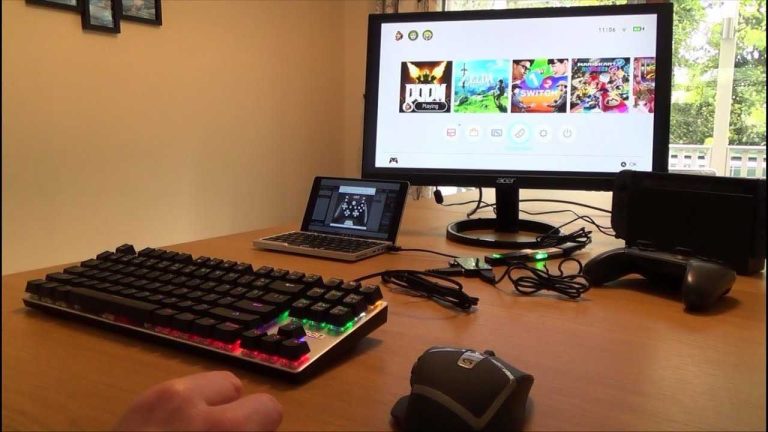If your keyboard and mouse have suddenly stopped working, don’t worry! First, try disconnecting and reconnecting them, as simple connection issues can often be the cause. If they’re wireless, check the batteries to ensure they’re not dead. Sometimes, restarting your computer can also do the trick, as it can reset any temporary glitches. If that doesn’t work, look for any software or driver updates that might be needed. It’s also a good idea to test the devices on a different computer to see if the issue is with the peripherals themselves or your computer. With these quick checks, you should be back to typing and clicking in no time!
Experiencing a malfunctioning keyboard and mouse can be frustrating and disruptive, particularly in today’s tech-driven world where efficiency is key. Whether it’s during a crucial work presentation or just browsing the web, losing input devices can halt your workflow. Understanding the common troubleshooting steps can save you time and effort. In this guide, we’ll walk through effective solutions to get your keyboard and mouse up and running again. You’ll find practical tips that address various issues, whether they’re hardware-related or rooted in software conflicts. Let’s dive in and get your devices functioning smoothly again!
“`html
What to Do If Keyboard and Mouse Is Not Working
Experiencing issues with your keyboard and mouse can be frustrating. Without these essential devices, navigating your computer becomes nearly impossible. In this article, we will explore various steps you can take to troubleshoot and resolve these problems effectively.
Check Physical Connections
The first step when your keyboard and mouse stop working is to check the physical connections.
- Ensure that your keyboard and mouse are properly plugged into their respective ports.
- If you are using USB devices, try disconnecting and reconnecting them.
- Inspect the cables for visible damage or fraying.
Sometimes, a loose connection can cause intermittent issues. Make sure everything is secure.
Power Supply Issues
If you are using wireless devices, power supply could be the culprit.
- Check the batteries in your wireless keyboard and mouse.
- Consider replacing them with new ones to see if that resolves the issue.
- Recharge the devices if they are rechargeable models.
A lack of power can prevent your devices from responding.
Restart Your Computer
Sometimes a simple restart can fix the problem.
- Reboot your computer to refresh the system.
- This can resolve temporary glitches that might be affecting your keyboard or mouse.
- If your keyboard is not working at all, you can reboot using the power button.
It’s amazing how often this simple step can work.
Test on Another Computer
If you have access to another computer, testing your keyboard and mouse there can help you identify the issue.
- Connect your devices to a different computer.
- If they work, the problem may be with your original computer.
- If they do not work, they may need to be repaired or replaced.
This step helps narrow down whether the problem is with the devices or the computer itself.
Update Drivers
Outdated drivers can often lead to issues with your keyboard and mouse.
- Open Device Manager by right-clicking on the Start button.
- Locate the keyboard and mouse sections.
- Right-click each device and select “Update driver.”
Keeping your drivers up to date can help resolve compatibility issues.
Uninstall and Reinstall Drivers
If updating the drivers doesn’t work, try uninstalling and then reinstalling them.
- In Device Manager, right-click on your keyboard or mouse and select “Uninstall device.”
- After uninstalling, restart your computer, and Windows will automatically reinstall the drivers.
- This can resolve issues with corrupted drivers.
Reinstalling drivers can clear up any underlying issues.
Check for Software Conflicts
Certain software can cause conflicts that prevent your keyboard and mouse from working properly.
- Consider any new software installations before the problem began.
- Try uninstalling any recent applications one at a time to see if that helps.
- Boot your computer in Safe Mode to see if the devices work there.
Identifying software conflicts can help restore functionality.
Use System Restore
If everything else fails, you can consider using System Restore.
- This feature allows you to return your computer to a previous state before the issues began.
- Access System Restore through the Control Panel.
- Follow the prompts to choose a restore point and initiate the process.
System Restore is a useful tool for undoing recent changes.
Check for Malware
Malware can often interfere with your hardware’s functionality.
- Run a full virus scan using your preferred antivirus software.
- Look for any malicious files that may be affecting your system.
- Remove any threats that are detected to restore normal operation.
Keeping your system clean can prevent further issues.
Inspect for Hardware Damage
Sometimes, the issue may stem from damaged hardware.
- Inspect the keyboard and mouse for any signs of physical damage.
- Look for loose keys or broken buttons that may affect performance.
- Consider trying a different keyboard and mouse to see if that solves the problem.
Physical damage may require repair or replacement.
Consult the Manufacturer
If your devices are still under warranty, consulting the manufacturer may be the best option.
- Reach out to customer support for assistance regarding your keyboard and mouse.
- They may provide troubleshooting tips specific to your device.
- Understanding warranty terms can also determine the possibility of a replacement.
Manufacturer support is valuable for resolving persistent issues.
Consider Upgrading Your Devices
If your keyboard and mouse are old or consistently causing issues, it may be time to upgrade.
- Research new models that have the features you need.
- Consider ergonomic designs if you spend long hours using these devices.
- Read reviews to find highly-rated keyboards and mice.
Investing in quality devices can enhance your computing experience.
In conclusion, troubleshooting keyboard and mouse issues can often be manageable with simple steps. Checking connections, updating drivers, and even considering hardware replacements are essential actions you can take. Don’t hesitate to reach out to professional support if needed. Armed with these tips, you’ll be well-equipped to tackle any keyboard or mouse issues that come your way.
“`
What to Do If Your Computer Mouse Isn’t Working #recoverit #wondershare #pctips
Frequently Asked Questions
What initial steps can I take to troubleshoot my unresponsive keyboard and mouse?
Start by checking the connections. Ensure that the keyboard and mouse are properly plugged into the USB ports. If they are wireless, check if the batteries are charged and the devices are paired with the computer. Restart your computer to see if that resolves the issue. If it does not, try connecting the devices to different USB ports.
Could software issues be causing my keyboard and mouse problems?
Yes, software conflicts can lead to keyboard and mouse malfunctions. Update your drivers by visiting the manufacturer’s website or using a driver update tool. Additionally, check for any recent software installations or updates that could have caused compatibility issues. Running a system restore might also help if the problems started after a recent change.
What if my keyboard and mouse are still not responding after troubleshooting?
If your keyboard and mouse remain unresponsive, try using them on a different computer to determine if the issue lies with the devices themselves. If they work on another system, the problem may be with your computer’s hardware or settings. If they do not work elsewhere, consider replacing them.
Are there any specific settings I should check if my keyboard and mouse aren’t functioning?
Check your computer’s device settings. Open the Device Manager to see if there are any error messages related to your keyboard or mouse. You can also check if they are disabled in the settings. Ensure that the drivers are up to date and that no settings have inadvertently changed that would prevent their operation.
How can I safely troubleshoot without risking data loss?
To avoid data loss, back up important files before performing any major troubleshooting steps. Use external drives or cloud storage for backup. When performing actions like system restores or driver uninstalls, ensure you follow safe practices by creating restore points, so you can revert to a previous state if necessary.
Final Thoughts
If your keyboard and mouse are not working, start by checking the connections. Ensure that both devices are securely plugged into the correct ports.
Next, try restarting your computer to see if that resolves the issue. If not, test the keyboard and mouse on another computer to rule out hardware failure.
Lastly, if the devices work elsewhere, you may need to update your drivers or troubleshoot software conflicts. By following these steps, you can better understand what to do if keyboard and mouse is not working.
I’m passionate about hardware, especially laptops, monitors, and home office gear. I share reviews and practical advice to help readers choose the right devices and get the best performance.






